HonorsandAwards
2014 SID Honors and Awards
This year’s winners of the Society for Information Display’s Honors and Awards include Dr. Katsumi Kondo, who will receive the Karl Ferdinand Braun Prize for his contributions to the development of in-plane-switching (IPS) TFT-LCD technology; Dr. Dirk J. Broer, who will receive the Jan Rajchman Prize for his discovery and development of UV-polymerizable liquid-crystalline polymers; Candice Brown Elliott, who will be awarded the Otto Schade Prize for her development of PenTile display technology; Dr. Han-Ping Shieh, who will be awarded the Slottow-Owaki Prize for his contributions to the education and training of students and professionals in the display field; and Jenny Bach, who will receive the Lewis & Beatrice Winner Award for her sustained services and contributions to the SID organization.
by Jenny Donelan
ONCE AGAIN, the Society for Information Display honors those individuals who have made outstanding contributions to the field of displays, with awards in the category of Fellow and Special Recognition, and also with the Braun, Rajchman, Otto Schade, Slottow–Owaki, and Lewis & Beatrice Winner awards. Recipients are nominated by SID members and selected in a process involving the Honors and Awards Committee and SID’s Board of Directors. Fan Luo, chairman of the awards committee, notes that there were many more deserving candidates this year than could be selected.
Doing More
The winners of this year’s major awards can be characterized by their commitment to doing more – sometimes a great deal more. Not one of these individuals was content to sit back and do the same old research or the same old job – they were always trying to learn something new and to make something better.
They kept pushing boundaries and pursuing knowledge even when it would have been reasonable to accept the status quo. While in hindsight it might seem clear that their efforts would lead to recognition and success, this was anything but the case while the years of painstaking research and record-keeping were taking place.
Dr. Katsumi Kondo, this year’s Braun Prize winner, saw one technology – in-plane switching – and considered how it might work with another – thin-film transistors – to improve wide-angle viewing in LCDs. At that time, IPS technology was not new, and neither were TFTs. But Kondo used them together to help make possible a whole new phase of the display industry.
Rajchman prize winner Dr. Dirk J. Broer spent a great deal of time working with polymers for telecommunications. When these polymers turned out to be less than ideal for that application, he did not give up, but turned his attention to enhancing display performance with those same polymers, with results that changed displays from then on.
Otto Schade prize winner Candice Brown Elliott began her career as an assistant at a display company where she could have simply punched the clock, but her curiosity about the company’s technology led her beyond administration and into R&D, the results of which enable many of today’s best-selling devices.
Slottow–Owaki prize winner Dr. Han-Ping Shieh not only nurtured graduates in display disciplines at National Chiao Tung University, but created NCTU’s Display Institute to perpetuate research in Taiwan. His idea of success is sending new display professionals into the industry to seed the future.
And Lewis & Beatrice Winner recipent Jenny Bach, whose curiosity about databases and computer systems led to a career at Apple and then at SID, went beyond the day-to-day to connect with individual members in ways that made the organization more of a community.
This year’s winners all achieved different types of success, but they are similar in their zeal to do more and in their never-ending curiosity about the world around them. Their efforts, often conducted over long weekends and late nights, led to breakthroughs that changed the display industry as we know it. We owe them all a debt of gratitude.
This year’s Honors and Awards recipients will be celebrated by the Society for Information Display during Display Week 2014 at the annual awards banquet to be held on Monday evening, June 2, prior to the Symposium. Tickets for this event are available in advance only by registering at www.displayweek.org.
The 2014 award winners will be honored at the SID Honors & Awards Banquet, which will take place Monday evening, June 2, 2014, during Display Week at the San Diego Convention Center. Tickets cost $90 and must be purchased in advance – tickets will not be available on-site.
Visit www.displayweek.org for more information.
|
Karl Ferdinand Braun Prize
This award is presented for an outstanding technical achievement in, or contribution to, display technology.
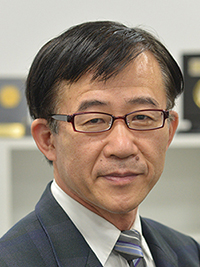
Dr. Katsumi Kondo, SID Fellow and a member of the Corporate Research and Development Group at Sharp Corp., will receive the Karl Ferdinand Braun Prize “for his pioneering contributions to the research and development of in-plane-switching (IPS) TFT-LCD technology, leading to the first commercialization of LCDs with intrinsically wide-viewing-angle characteristics.”
Back in the early 1990s, when cathode-ray tubes (CRTs) were the dominant display technology, liquid-crystal displays were considered possible replacement candidates, but their viewing angle was far inferior to that of CRTs, especially when used in large formats such as TVs and monitors. Production costs for LCDs were also greater. At that time, Dr. Katsumi Kondo, a senior researcher at Hitachi, became intrigued by the in-plane-switching (IPS) mode originally suggested by SID
Fellow Dr. Gunter Baur as a possible way to improve viewing angle in LCDs. Kondo and his group at Hitachi devised a method of combining IPS with thin-film
transistors so as to enable angular-independent LCD operation. The team succeeded in reducing the number of conducting layers per pixel from 4 to 2 (compared with existing TFT TN-LCDs) and also invented zig-zag electrode patterns for IPS-LCDs to create multi-domain LC pixels. These developments eliminated color shift in TFT-addressed IPS-LCDs and made TFT-addressed IPS-LCDs a key technology for large-sized TVs.
The idea of combining these technologies was far from obvious at the time, and the initial impact may be understood from reactions to Kondo delivering a paper on IPS-TFT LCDs at Asia Display in 1995 in Hamamatsu, Japan. Shigeo Mikoshiba, SID Fellow and Past-President, describes the scene: “I clearly remember that at 8:30 in the morning, I found crowds of people who were not able to get into the conference room because it was already fully packed. Since I was then program committee chair, my immediate worry was: ‘Did I make a mistake in the facility assignment?’ ” But Mikoshiba soon discovered that the crowds were there due to the buzz over Kondo’s presentation. “A demo exhibition of his device at Asia Display enchanted every visitor,” adds Mikoshiba. Since that time, and for many years afterward, IPS-TFT LCDs were the mainstay of LCD production.
Mikoshiba adds that Kondo is not only a dedicated researcher, but an active volunteer. “Dr. Kondo showed excellent leadership in the display community as the SID Japan Chapter Chair and the SID Japan Chapter Director,” says Mikoshiba.
Kondo received his B.S. degree in engineering from Tokyo University of Agriculture and Technology and went on to earn his M.S. and Ph.D. degrees from Tokyo Institute of Technology. He began working at Hitachi Research Laboratory in 1983 and eventually became a Senior Chief Researcher for Displays before joining Sharp, where he is now a Unit General Manager. He has also taught at several institutions, including Kyushu University, where he is currently a Visiting Professor.
Jan Rajchman Prize
This award is presented for an outstanding scientific or technical achievement in, or contribution to, research on flat-panel displays.

Dr. Dirk J. Broer, Professor at Eindhoven University of Technology, will receive the Jan Rajchman Prize, “for his pioneering discovery and development of UV-polymerizable liquid-crystalline polymers and his outstanding contributions to their applications in flat-panel displays.”
“It is really quite easy to say that the field of displays and current display products would not be the same, and notably less advanced, if not for the
contributions of Professor Broer,” says Philip Bos, Associate Director of the Liquid Crystal Institute at Kent State University. Broer, a polymer chemist who began his career in 1973 at Philips Research in Eindhoven, The Netherlands, is the inventor of UV-polymerizable liquid-crystalline materials that made possible advances such as fast-switching vertically aligned displays, high-pretilt generation, the formation of patterned retarders for 3-D, the stabilization of photo-alignment, polarization gratings, multi-domain displays with wide viewing angle, wide-bandwidth cholesteric displays, and more. Broer began working with liquid crystals at Philips as part of an optical telecommunications project. His invention was a technical success, he says, but the materials were expensive and there were other, more economical solutions. “After the telecommunication adventure,” says Broer, “it soon became clear that the optical properties of the liquid-crystal networks polymer films were of more interest.” Using the same liquid-crystal monomer he had developed earlier with his Philips colleagues, Broer turned toward enhancing display performance.
According to Bos, “Broer has shown how to solve many problems in the area of displays through breakthrough new ideas. In particular, his impact on the field of polymer-stabilized liquid-crystal displays and on optical components using his reactive mesogens is incredible. Many researchers, including myself, have used his materials, or derivatives of his materials, when considering new device advances.”
Broer became interested in chemistry as a high-school student. He received his Ph.D. from the University of Groningen, where he specialized in polymer structuring and self-organization, explaining that he chose polymer chemistry because of its close relationship to practical applications. “That is also why I chose a career at Philips,” he says, “where fundamental science could be combined with product development.”
Some of Broer’s inventions have yet to be used and some are still in development. At one point in his career, he developed a “paintable display technology” that applies the liquid-crystal mixture to the substrate in one step. As far as he knows, this has not been used commercially. A challenge his team is currently working on is to create mechanically responsive touch screens making use of order–disorder transition in liquid-crystal polymers.
In all, Broer has devoted more than 25 years of his professional career to researching material and technology optimization of UV-polymerizable liquid crystals in different areas, including displays. Research in this field has resulted in more than 220 publications and more than 120 U.S. patents. Since 2010, he has been a full-time professor in Eindhoven specializing in functional organic materials for clean technologies including energy harvesting, water treatment, and healthcare applications. He is also a consultant at Merck.
Otto Schade Prize
The Otto Schade Prize is awarded for an outstanding scientific or technical achievement in, or contribution to, the advancement of functional performance
and/or image quality of information displays.

Photography by Carolyn P. Reed/CPR Photography 2014.
Candice Brown Elliott, CEO and Founder of Nouvoyance, Inc., receives the Otto Schade Prize this year “for the development of PenTile display technology, a key enabler of power-efficient high-resolution mobile OLED and LC displays based on subpixel rendering of color pixel arrangements.”
Candice Brown Elliott grew up in Silicon Valley at a time when the high-tech industry as we know it was poised to begin. Her first job in that sector was with CMX Video Systems, where she worked as a secretary to pay her way through college. While at CMX, she began learning about video technology, and thus began a life-long involvement with video and displays. She eventually earned a B.S. degree in science and psychology from the State University of New York and continued to further her practical education as well, holding a number of positions in display-related fields, including 3 years as an engineering supervisor at Planar Systems.
In 2000, she founded Clairvoyante, based on PenTile display technology that had its roots in her work at Planar. “I was working [at Planar] on the color thin-film electroluminescent (EL) project in the early ‘90s, focused on the problem of bringing the cost of electronics and packaging down, when I began toying with the idea of reducing the number of drivers, which were expensive, and the number of electrical interconnects, which were at the time very bulky, by using novel color subpixel layouts and subpixel-rendering algorithms,” says Elliott.
The PenTile method for subpixel sharing within pixels improves the resolution of the display while maintaining color balance and mix. The structure of the subpixels is optimized based on human-factors models, and the relative area of the mix of subpixels is also optimized for best luminance. According to Joel Pollack, Senior Manager of Display Engineering at Lab126 and a former colleague of Elliott’s, “Candice has made a key contribution to enabling high-resolution displays for mobile devices with PenTile display technology.”
One of the greatest challenges of introducing PenTile to the display industry was that for a time it was a solution to a problem that did not exist. When Clairvoyante was founded, notes Elliott, the market was not quite ready for high-resolution mobile displays, and therefore did not need better ways of implementing them. With the introduction of smartphones this changed, and PenTile is now used in a variety of mobile devices and also some TVs.
Clairvoyante was purchased by Samsung in 2008 and Elliott then founded the independent company Nouvoyance, which continues to support PenTile and other display technology for Samsung. Says Dr. Sung Tae Shin of Samsung, “Over the 4 years that I worked with Candice and her team, I developed a keen appreciation of the PenTile technology and its impact upon mobile displays and associated consumer products. It was a key enabler for high-resolution mobile OLED displays and is now
beginning to see adoption into high-resolution tablet products.” PenTile technology has been used in devices such as the Samsung Galaxy Note and SIII.
Elliott has 84 U.S. patents issued with more pending and many more foreign patents issued and pending. She is a visiting fellow at Nottingham Trent University.
Slottow–Owaki Prize
The Slottow–Owaki Prize is awarded for outstanding contributions to the education and training of students and professionals in the field of information displays.

Dr. Han-Ping Shieh, an NCTU Professor and Vice-Chancellor at National Chiao Tung University, will receive the 2014 Slottow– Owaki Prize “for his exceptional contributions to the education and training of students and professionals in the display field and the promotion of display science and technology.”
Dr. Han-Ping Shieh has taught at the university level for more than 20 years and has advised more than 100 M.S. and Ph.D. students in display-related fields, published more than 160 journal papers, and obtained more than 60 patents (with 40 more still pending). He also founded the Display Institute (DI) at National Chiao Tung University (NCTU) and helped other major Chinese universities to establish display-related institutes in their engineering schools. He is a veritable force for displays in Taiwan and China.
“Dr. Shieh’s contribution to the promotion of professional activities as well as to the sustained growth of the Taipei Chapter of SID is exceptional and well-known,” says Fred Chen, SID Fellow and Chief Scientist of Guangdong Aglaia Optoelectronic Materials, Co., as well as a former Professor at NCTU. “If one were to single out his most outstanding achievement, it has to be the founding of the first display institute in Asia dedicated to graduate student education and training of display professionals, at NCTU in 2003.”
The institute came about, says Shieh, because in the late 1990s, NCTU was well-known for microelectronics and photonics, but did not have the same foundation for the study of displays, which were becoming significant to industry in Taiwan at this time. Shieh was asked by the president of NCTU to found the institute, which started
out with three people and expanded from there. In 2003, the DI gained its own facility (the CPT building, donated by and named after Chunghwa Picture Tubes), so that all the labs, faculty, and students could be accommodated under one roof. “Of course, NCTU already had substantial resources in microelectronics
fabrication, labs, and expertise, which made my job of establishing the DI much easier,” says Shieh.
Teaching has proved very gratifying to Shieh over the years. When asked about the highs and lows of working with students, Shieh says there are really no lows. “Most of them are very smart and willing to take on challenges,” he says. One of his greatest satisfactions has been to see large numbers of students go on to become high-level executives at display or display-related companies. “I have a bi-annual gathering at the lab, which is usually attended by more than 70 former students and their families,” he says.
Shieh received his B.S. degree from National Taiwan University and went on to receive his Ph.D. in electrical and computer engineering from Carnegie Mellon University. He joined NCTU in 1992, where he was the Dean of the College of Electrical and Computer Engineering from 2006 to 2010, and then a senior Vice President from 2011 to 2013. He has pursued projects in private industry from time to time, but feels most at home in academia. His current research interests are displays, optical MEMS, nano-optical components, and solar energy.
Lewis & Beatrice Winner Award
The Lewis & Beatrice Winner Award for Distinguished Service is awarded to a Society member for exceptional and sustained service to SID.
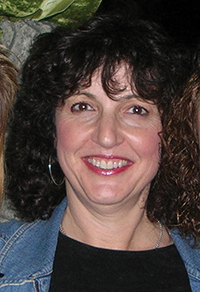
Jenny Bach will receive the Lewis & Beatrice Winner award “for her sustained services and contributions to the operations and growth of the
SID organization.”
For more than 10 years, Jenny Bach was “the face of SID,” in the words of former SID President Larry Weber, working as the data manager for the Society’s California headquarters, but also serving as the main point of contact for SID’s thousands of members. During her tenure with SID, she saw many changes,
including a membership increase in the thousands, the addition of new chapters around the world, and an increased involvement by students, particularly international students.
In her own words, she saw her job as “making sure that members got what they wanted,” but that was not always a simple task. According to SID Fellow and Otto Schade prize recipient Adi Abileah, “She put in a huge effort, much above the call of duty, for the organization. She was always responsive to any small or big problem, sometimes at crazy hours of the day.”
Weber began to work with Bach in 2006, when she was solely responsible for running the SID headquarters. “I found that Jenny operated the SID office very efficiently and with great enthusiasm,” says Weber. “As president, I had to continually rely on her great knowledge of SID, her understanding of the needs of the many individual SID members, and her ability to quickly and efficiently get some hot project done.”
Other SID past-presidents echo these sentiments. According to Tony Lowe, “Throughout her time in SID’s employment, Jenny performed superbly. I found her always helpful and willing to go the extra mile. Lowe describes Bach’s manner in dealing with members, from executive to new recruit, as “calm, friendly, and very effective.” He adds: “I have received unsolicited praise for Jenny and her work for SID from all corners of the globe.” Says Past President Allan Kmetz, “What makes her long service to SID deserving of this award is her outstanding dedication, individual initiative, diligence, and reliability, as well as personal loyalty and warmth.” As testament to these efforts, Bach received five Presidential Citations from SID during her time with the Society.
Bach received her B.A. degree in Interdisciplinary Studies in Social Science from San Francisco State University, where she also studied data management. She joined Apple Computer in 1984 as a data entry clerk and worked there for 12 years, eventually becoming a network administrator for the Instructional Products Department. When she joined SID in 1998, she used her data and IT expertise to streamline operations for the organization. She also discovered what it was like to work for an organization aimed at serving members. Although Bach describes herself as “a real data person,” she is obviously also a people person: “I really enjoyed all the interactions with members,” she says, adding that it was her particular pleasure to get to know members of chapters from all over the world.
2014 SID Fellow Awards
The grade of fellow is conferred annually upon SID members of outstanding qualifications and experience as scientists or engineers whose significant contributions to the field of information display have been widely recognized.
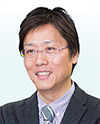
Chihaya Adachi, “For his outstanding contributions to the science and technology of organic light-emitting devices including materials and device structures.” Dr. Adachi is the director of the Center for Organic Photonics and Electronics Research (OPERA) at Kyushu University. He received his doctoral degree in engineering from Kyushu University.

Victor Belyaev, “For his many contributions to the science and technology of liquid-crystal materials, electro-optical modes, displays, components, and systems.” Dr. Belyaev is a Principal Scientist with Moscow Region State University. He received his Ph.D. in physics from Moscow Institute for Physics and Technology and his Dr.-Eng. habil. in optic and optoelectronic devices from Central R&D Institute Kometa.

Janglin Chen, “For his leading contributions to the development of flexible displays, substrate technology, and thermally rewritable electronic paper.” Dr. Chen is a Vice-President of the Industrial Technology Research Institute (ITRI) in Taiwan and the General Director of the Display Technology Center at ITRI. He has a Ph.D. in chemistry from the Polytechnic Institute of New York University.
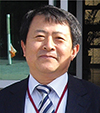
Yong-Seog Kim, “For his many contributions to the science and technology of plasma display panels including the development of secondary-electron-emitting materials, the exo-electron emission phenomenon, and advanced material processing for information displays.” Dr. Kim is a Professor with Hongik University. He earned his Ph.D. in Materials Science and Engineering from Massachusetts Institute of Technology.
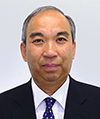
Taiichiro Kurita, “For his outstanding contributions to the research and development of display image-quality characterization and high-quality display systems, particularly those involving the presentation of moving images on active-matrix displays.” Dr. Kurita is an Executive Research Engineer with NHK (Japan Broadcasting Corporation). He received his Ph.D. from Keio-Gijuku University.
2014 SID Special Recognition Awards
Presented to members of the technical, scientific, and business community (not necessarily SID members) for distinguished and valued contributions to the information-display field.

Mark Spitzer, “For contributions to the developments of active-matrix-liquid-crystal microdisplays, microdisplay viewing optics, and wearable computer technology.” Dr. Spitzer is a Director of Operations at Google, where he works in the Google [X] Labaratory. He received his Ph.D. in physics from Brown University.
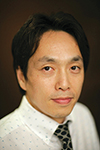
Hyun Jae Kim, “For his pioneering development of low-temperature-polysilicon (LTPS) TFT and solution-processed oxide-TFT technologies.” Dr. Kim is a Professor with the School of Electrical and Electronic Engineering at Yonsei University. He earned his Ph.D. in Materials Science and Engineering from Columbia University.
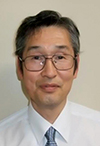
Zenichiro Hara, “For his leading contributions to the development of the super-sized display with seamlessly tiled OLED panels.” Dr. Hara is an engineer with Mitsubishi Electric Corp. He received his Doctor of Engineering degree from Nagasaki University.

Changhee Lee, “For his leading contributions to the research and development of organic light-emitting diodes (OLEDs) and quantum-dot LEDs for full-color displays and solid-state lighting.” Dr. Lee is a Professor with the School of Electrical and Computer Engineering at
Seoul National University. He earned his Ph.D. in physics from the University of California at Santa Barbara.
Jenny Donelan is the Managing Editor of Information Display
Magazine. She can be reached at jdonelan@pcm411.com.